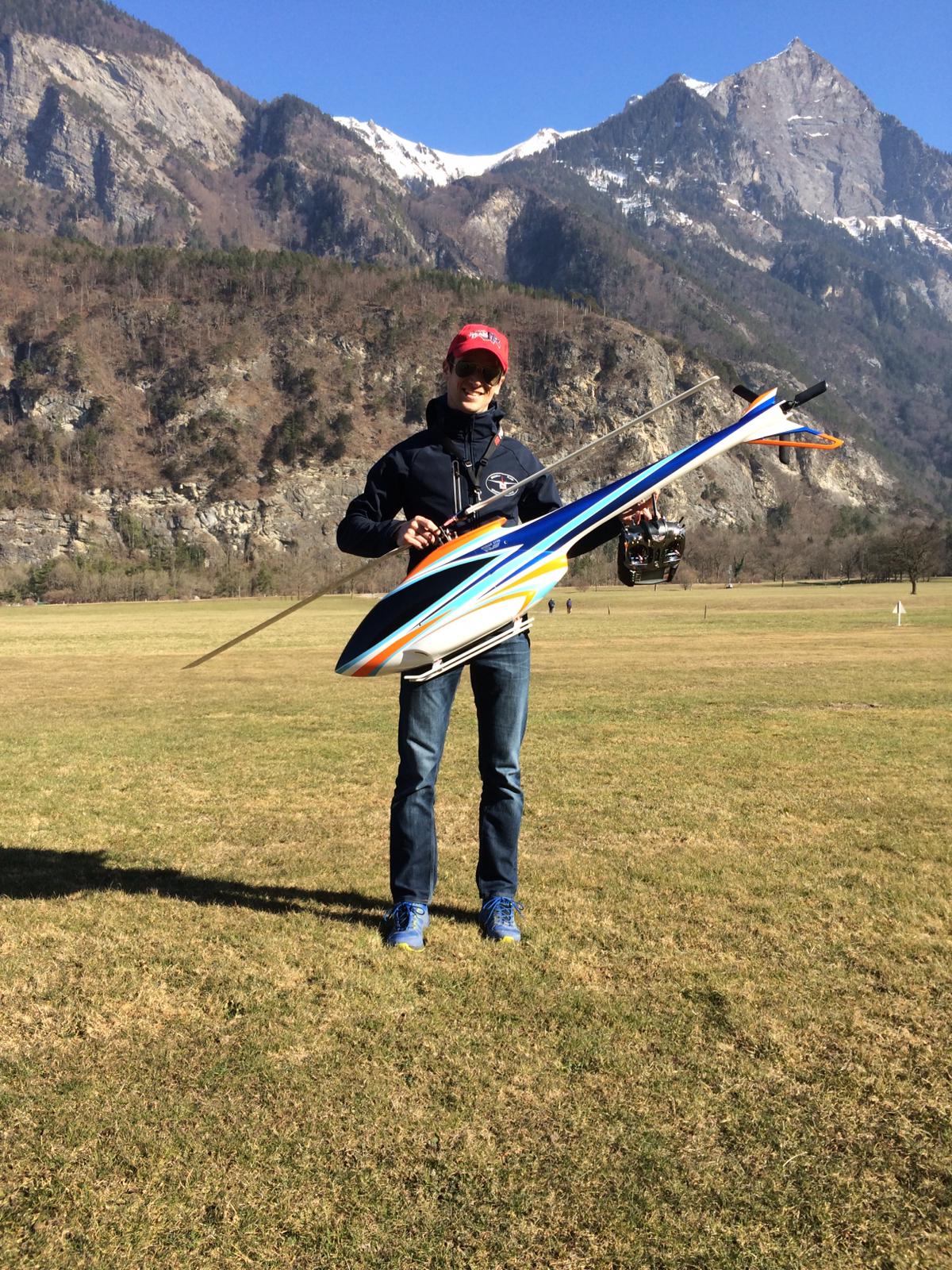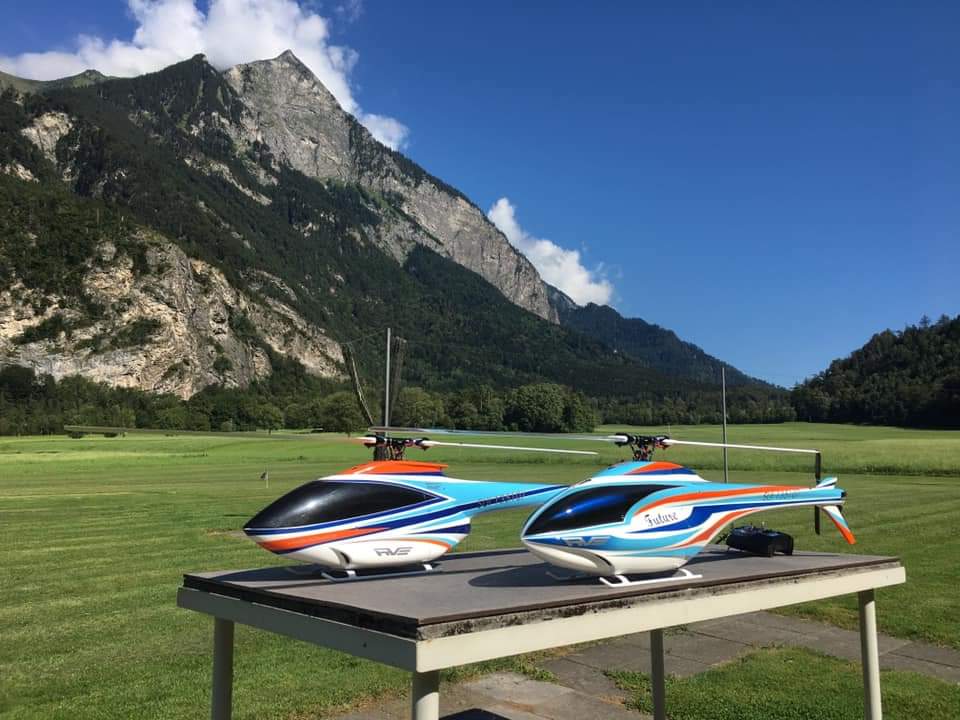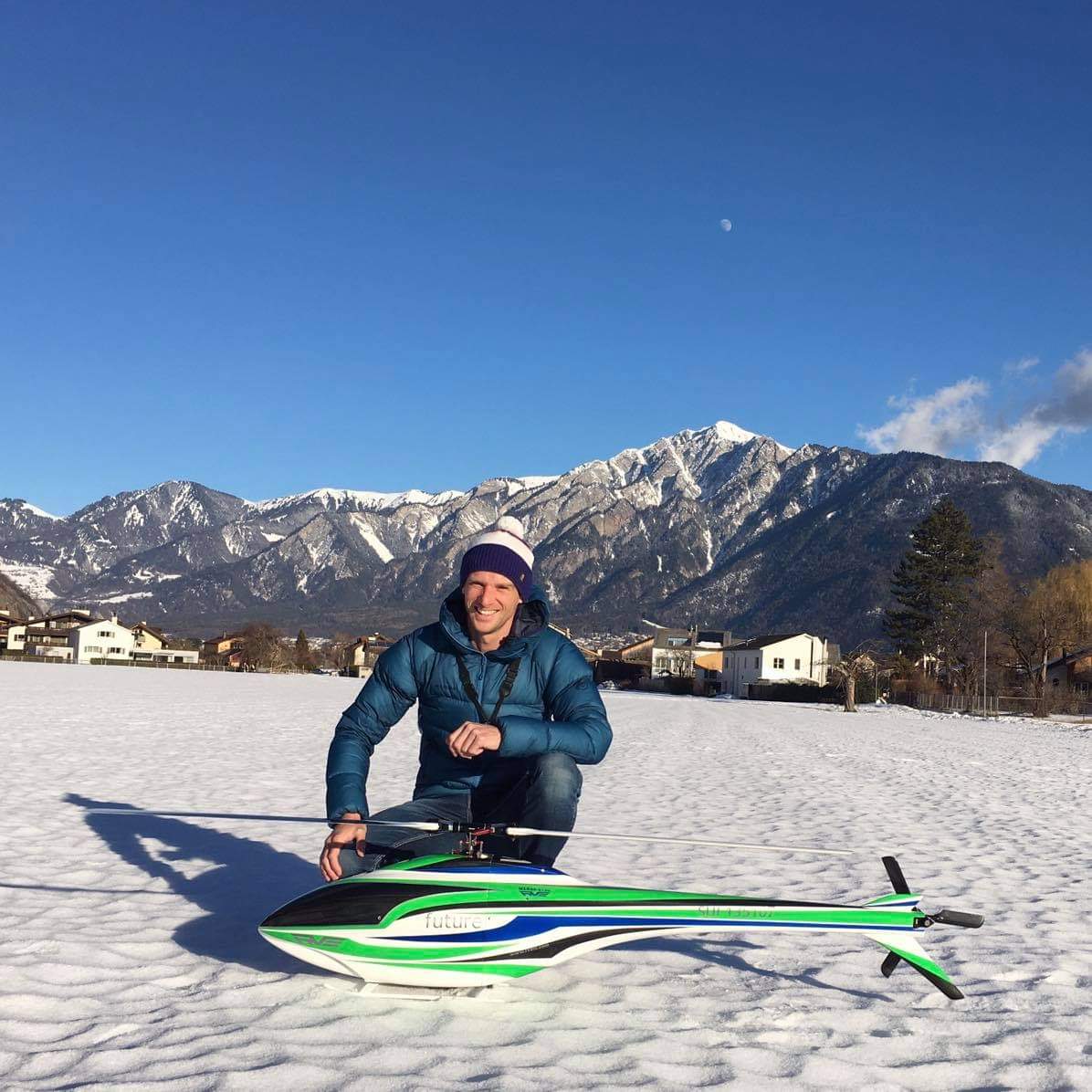Field report from RVE Merak 750

Setup

The mechanics
Bolt it together, adjust the controls and motor, and then off to the flying field. The parts are so precisely manufactured that it is almost impossible to make any mistakes when assembling. Also the wear resistance is second to none. Apart from an annual check, I do nothing to the mechanics. No play in the linkages, no defective bearings, no worn gears. Everything tip top. And that after 1000 flights!
Remote Control
I have been using the miniTAGS in various helicopters for several years. Again and again I adjust the parameters and the sensitivities to the respective system. With none of my previous F3C helicopters I could set such high values as with the Merak. I assume this is due to the stiff chassis (glued) and the low center of gravity (low head). I am thrilled. The more work the gyro can do for me the more I can concentrate on executing the figures.
For F3C flying, 3 programs are enough for me. I use one for hovering, one for acro figures and one for autorotation. For hovering and acro different parameters are used. For autorotation I use the acro paramaters with adjusted pitch and control values.
miniTAGS Parameter (Hovering)

miniTAGS Parameter (acro)

Rudder deflections and settings from the remote control (JR XG14)

I increase the intensity of the gyro until the system starts to oscillate slightly. Afterwards, I set the value back again by a few percentage points.
Please be careful with the adjustment of the values. I prefer a very sluggish helicopter when hovering. Also with the intensity values you should start a little lower and then increase it successively until it suits your merak.

Merak F3C Body vs. Merak Future
The Merak F3C Body is the lightest F3C fuselage on the market. It is stable in the air, can be steered softly and smoothly and is a pleasure for the eyes. Due to its low weight, it can be flown in a very controlled manner during acro maneuvers. Large and even figures can be flown without taking much momentum. Thanks to the low weight the upward passages can be dosed with the pitch and downward it does not become too fast. This results in a very harmonious and smooth image -> exactly what we want in F3C flying.
The Future Body has an increased basic speed compared to the Merak Body. The aerodynamic shape wants to be flown faster and doesn't like it when you take it too hard on the reins. Therefore the figures will automatically be a bit bigger as well. For the new F3C programs (from 2020) this is in my opinion an advantage. There are many figures that have to be flown large to be able to fly the elements nicely.
In wind, rough or gusty air, the Future shows its greatest strength. The fuselage is much less susceptible to turbulence and wind. No matter if crosswind, headwind or tailwind -> the Future cuts its way through the air. This is also clearly noticeable when hovering, especially during pirouettes, as it behaves the same at every angle and never gets thrown off course. In autortation, the voluminous fuselage plays out a further strength. The large cross-section allows the helicopter to glide smoothly to the ground. This makes autorotation much easier and less stressful, which usually results in a precision landing. For all these reasons, I will use the Future exclusively from 2021.
RVE 755mm vs. 745mm rotorblades
The 755mm rotor blade is perfect for F3C. It can be controlled precisely and yet is never nervous. In aerobatics the speed can be adjusted very well. Even flown slowly, large figures can be drawn in the sky. I am always surprised how much energy is in the blades. Like a Formula 1 race car! Rolls succeed as if pulled on a string. With flips, on the other hand, the blade needs a bit more control input. When hovering, the stable disc is a help. The helicopter leaves its position only slowly, giving the pilot enough time for correction. The altitude can be adjusted with millimeter precision using the pitch, without constantly bouncing up and down. Excellent!
The 745mm version - From the beginning, these blades have excited me. There is no other blade on the market that responds so precisely and linearly to pilot input! No matter whether roll elevator or pitch! No matter if storm or calm. Due to the direct behavior it does not feel as stable as the 755mm. Also with the acro figures and autorotation it comes from the energy not quite to his longer brother.
My recommendation: if you are a pilot who likes to fly a stable helicopter with decent "horsepower", I recommend the 755mm blades -> you will enjoy it!
However, if you fly a lot (more than 200 flights per year) and often windy conditions you will love the 745mm blade like me!
Conclusion
The RVE Merak is undisputedly one of the best F3C competition gliders on the market. It is precise, easy to fly and I still enjoy it after 1000 flights! And on top of that it looks extraordinarily good -> hand on heart: what more could you want?
The previously described impressions of the RVE Merak 750 I have gained in the last two years under different conditions. I flew the Merak about 700 flights with the Merak F3C fuselage and about 300 with the Future fuselage. Please don't forget that every pilot has his own preferences. These are only my impressions -> It is best to test the material yourself.
The author - I am Martin Fah, member of the Swiss F3C National Team and flying F3C competitions for about 20 years.
